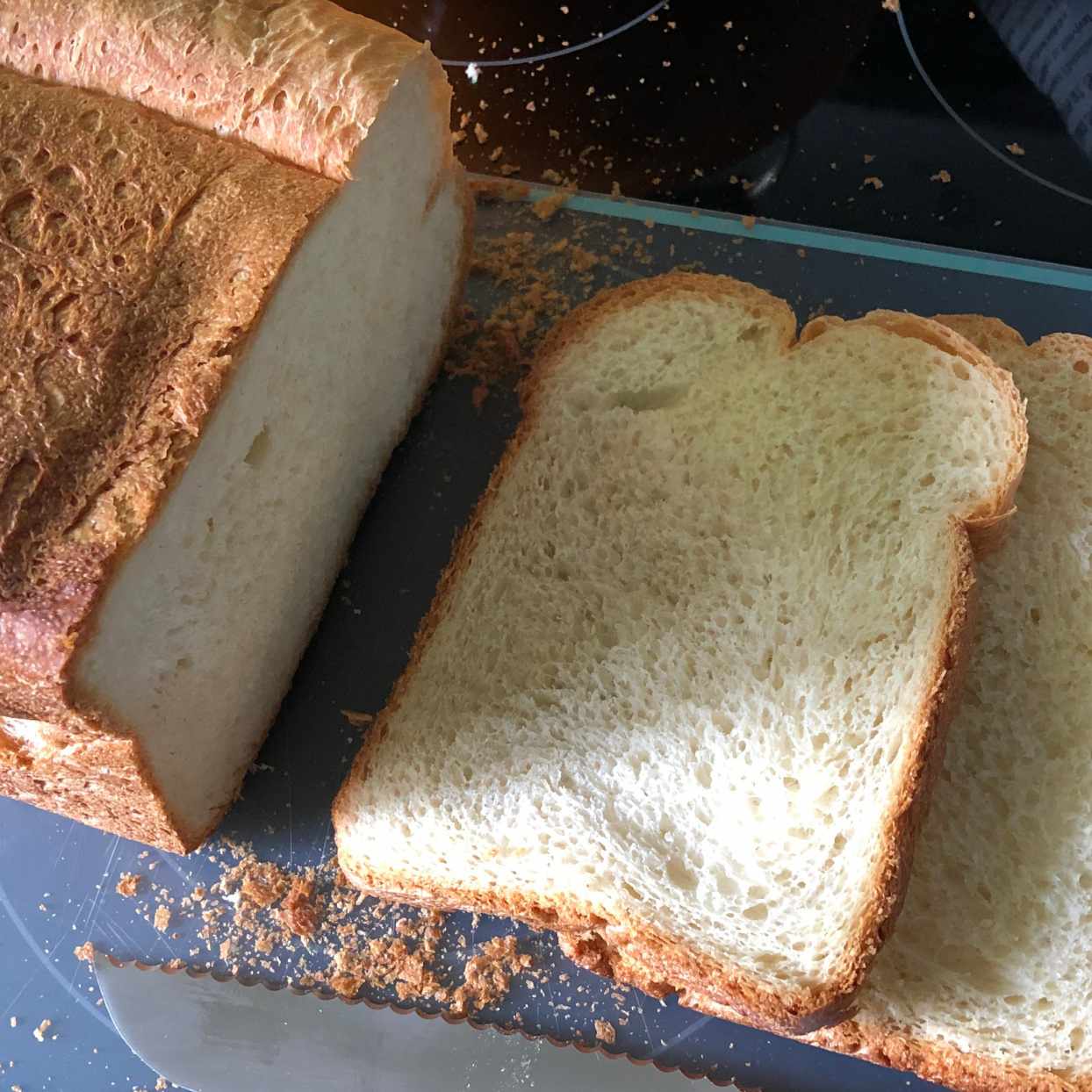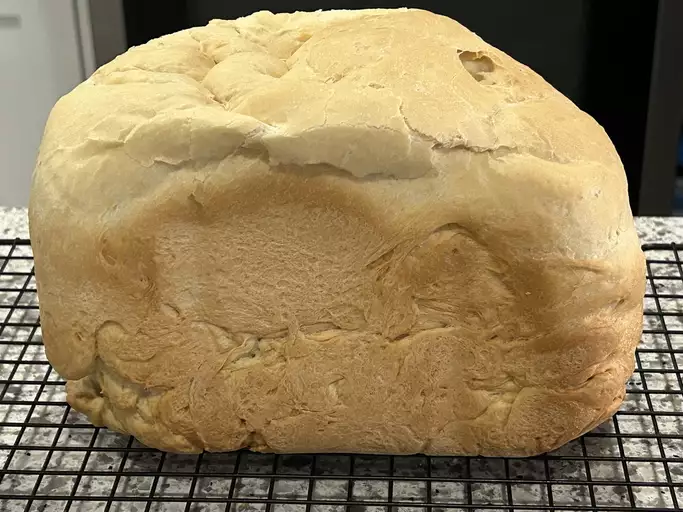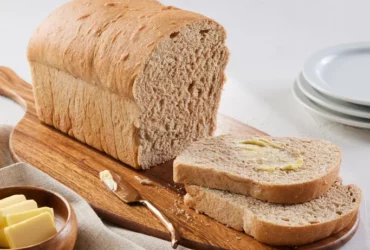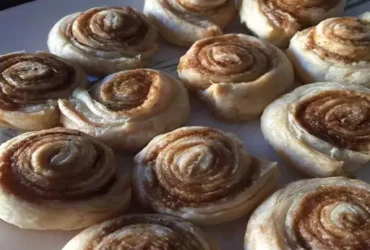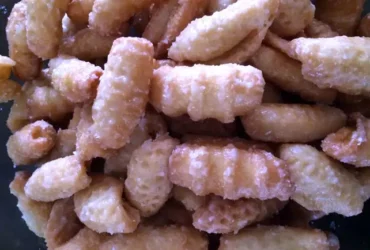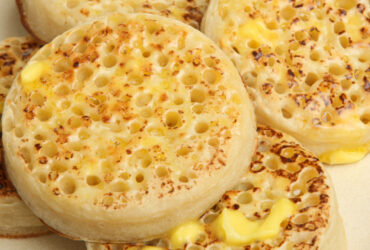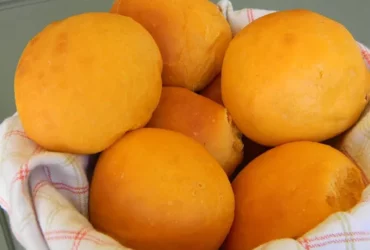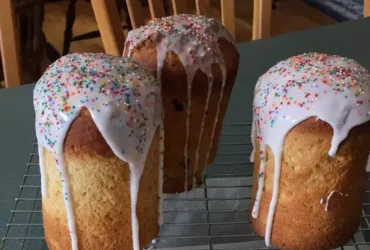Ingredients and Equipment
Bread Machine Essentials
The foundation of making the best bread machine bread lies in selecting the right ingredients and equipment.
A good quality bread flour with a high protein content, typically above 12%, is essential for creating a strong gluten structure that will give your bread its texture and rise.
Alongside bread flour, you may also want to add some sugar or other sweeteners, depending on the type of bread you’re making. Sugar plays a role in feeding the yeast and influencing the fermentation process.
Salt is another vital component, as it enhances flavor and helps control yeast growth.
The addition of yeast provides the necessary microorganisms for fermentation to occur. Active dry yeast or instant yeast can be used, depending on your preference and the specific requirements of your recipe.
Other ingredients such as oils, milk, or eggs may also be included in your bread machine recipe to enhance flavor, texture, and moisture content.
Regarding equipment, a bread machine is, of course, an essential item. Look for one with multiple functions and a large capacity to accommodate different types of dough and loaves.
The kneading blade within the machine works tirelessly to mix, knead, and develop the dough during the initial stages of proofing.
A dough sensor or a similar feature should be present in your machine to detect when the dough has reached its optimal level of development. This ensures the machine automatically switches to the fermentation phase without overworking or under-working the dough.
Other useful features to consider include adjustable temperature, time settings for different proofing and baking stages, and various cycle options (e.g., basic bread, whole wheat, French).
1 loafsized bread machine
The key to achieving perfect bread machine bread lies not only in the recipe itself but also in the choice of ingredients and equipment. A good loafsized bread machine is an essential piece of equipment for any serious baker, as it allows for precise temperature control, consistent mixing, and easy operation.
When selecting a bread machine, look for one that has a large capacity, typically 1-2 pounds, to accommodate the ingredients needed for a standard loaf. A digital display and intuitive controls are also essential features, making it easy to navigate through the various settings and options.
A high-quality bread pan is another crucial component of a good bread machine. The pan should be non-stick, allowing for effortless removal of the finished loaf, and durable enough to withstand repeated use.
As for ingredients, the quality of your flour will significantly impact the final product. Choose a bread flour with a high protein content (around 12-14%), which will provide structure and texture to the bread. You can also experiment with whole wheat or rye flour to add depth and complexity to the flavor.
A high-quality yeast is essential for bread machine bread, as it will contribute to the dough’s rise and overall flavor. Choose a fresh package of active dry or instant yeast, following the manufacturer’s instructions for proper storage and handling.
Salt and sugar are also important components of bread machine bread. Use a fine-grained salt, such as sea salt or kosher salt, to add depth and texture to the dough. As for sugar, use a small amount (about 1-2 tablespoons) to enhance browning and flavor.
Butter or oil can be added to the dough to enhance richness and tenderness. Choose a high-quality, European-style butter or neutral-tasting vegetable oil, such as canola or grapeseed oil.
Finally, any add-ins you choose (such as nuts, seeds, dried fruits, or herbs) should be fresh and of high quality, adding texture, flavor, and interest to the finished loaf.
In conclusion, selecting the right ingredients and equipment for your bread machine is crucial in achieving perfect bread machine bread. With a good loafsized bread machine and the right ingredients, you’ll be well on your way to baking delicious, homemade bread with ease.
Measuring cups and spoons
Bread machine recipes often call for specific ingredients to produce a delicious and consistent loaf.
The following are some common ingredients found in most bread machine recipes:
- Flour – All-purpose flour, whole wheat flour, or a combination of both
- Sugar – White sugar, brown sugar, or honey
- Yeast – Active dry yeast or instant yeast
- Salt – Regular salt or sea salt
- Fat – Butter, oil, or non-dairy alternatives like margarine or coconut oil
- Flavorings – Optional ingredients such as herbs, spices, nuts, seeds, or dried fruits
The quality and type of ingredients used can significantly affect the final product.
Bread machines often require precise measurements to ensure proper mixing and rising.
To achieve accurate measurements, use:
- Measuring cups: Dry and liquid measuring cups in various sizes (e.g., 1 cup, 2 cups)
- Measuring spoons: Tablespoons (tbsp) and teaspoons (tsp)
The equipment needed for bread machine recipes includes:
- Bread machine – A kitchen appliance designed to mix, knead, rise, and bake the dough
- Measuring cups and spoons – As mentioned earlier
- Mixing bowl – For initial mixing of ingredients (not always necessary)
- Dough scraper or spatula – For scraping the sides and bottom of the bread machine’s pan
- Loaf pan – A traditional loaf pan for baking a free-standing loaf (optional)
Understanding the specific ingredients and equipment needed will help you achieve perfect bread machine bread every time.
Wooden spoon or spatula for mixing
To make the best bread machine bread, you’ll need to gather the right ingredients and equipment.
Ingredients
The following ingredients are required for this recipe:
- 2 cups of all-purpose flour
- 1 teaspoon of salt
- 1 tablespoon of sugar
- 1 packet (2 1/4 teaspoons) of active dry yeast
- Water, as needed (approximately 1 cup)
- Optional: sesame seeds or other toppings for garnish
The quality of your ingredients will greatly impact the taste and texture of your bread. Be sure to use fresh flour, yeast, and sugar.
Equipment
The following equipment is required for this recipe:
- Bread machine: a machine specifically designed for baking bread in a controlled environment.
- Wooden spoon or spatula: used for mixing and scraping the sides of the bread machine’s bucket during the kneading process.
- Measuring cups and spoons
- Mixing bowl
- Dish towel or clean cloth
Before beginning, make sure your bread machine is clean and free of any debris. If necessary, run a cleaning cycle to remove any old yeast or flour residue.
Oven mitts for safe handling
The key to making great bread machine bread lies not only in the recipe itself, but also in the quality of the ingredients and equipment used.
Here are some essential ingredients you’ll need:
- All-purpose flour: Use a high-quality, unbleached all-purpose flour that is suitable for bread making. A popular choice is King Arthur Unbleached All-Purpose Flour.
- Yeast: Active dry yeast or instant yeast can be used in the recipe. Make sure to check the expiration date and store it properly to ensure it remains active.
- Salt: Use a high-quality, unrefined salt that adds flavor and tenderness to the bread.
- Sugar: White granulated sugar or brown sugar can be used in small quantities to help feed the yeast and add sweetness to the bread.
In addition to ingredients, it’s also important to have the right equipment:
- Bread machine: A good-quality bread machine is essential for making great bread. Look for one that has multiple settings and a delay start feature.
- Oven mitts: For safe handling, oven mitts are a must-have in the kitchen. They protect your hands from burns and make it easier to handle hot pans and equipment.
Some other useful equipment for bread making includes:
- Dough scraper: A dough scraper is a long, flat tool used to scrape the sides of the bowl and remove excess dough from the countertop.
- Measuring cups and spoons: Accurate measurements are crucial in bread making. Use measuring cups and spoons to ensure you’re using the right amount of ingredients.
- Dough whisk or wooden spoon: A dough whisk or wooden spoon is used to mix and knead the dough, ensuring it’s evenly developed and smooth.
By having the right ingredients and equipment, you’ll be well on your way to making delicious bread machine bread that will impress family and friends!
The Magic of Yeast: Understanding the Science
Why Yeast Matters
The magic of yeast lies in its ability to convert sugars into carbon dioxide gas, causing dough to rise and giving bread its light, airy texture.
This process is known as fermentation, and it’s a result of yeast’s unique cellular structure and metabolic processes.
Yeast cells have a number of specialized organelles that allow them to convert sugars into energy, including the mitochondria, which generate ATP through aerobic respiration, and the endoplasmic reticulum, which plays a role in sugar transport and metabolism.
The yeast cell’s cell wall is also crucial for its ability to ferment. The cell wall is composed of a tough, rigid material called chitin, which helps maintain the cell’s shape and provides mechanical support during fermentation.
When yeast cells are placed in an environment with sugars present, they begin to feed on these sugars and produce carbon dioxide gas as a byproduct of their metabolism.
This process is essential for bread making, as it allows dough to rise and gives bread its characteristic texture and flavor.
In addition to its role in fermentation, yeast is also responsible for the development of many other compounds that contribute to the flavor and aroma of bread.
Yeast can produce a wide range of volatile organic compounds (VOCs) through its metabolic processes, including aldehydes, esters, and terpenes.
These VOCs are responsible for many of the complex flavors and aromas found in bread, including notes of fruit, spices, and herbs.
The type and amount of yeast used can also impact the final product. Different types of yeast have different metabolic profiles and produce different compounds during fermentation.
For example, active dry yeast (ADY) is a common type of yeast used in bread making, while instant yeast is a more modern formulation that has been treated to improve its performance and shelf life.
Bakers often use a combination of ADY and instant yeast to achieve the desired flavor and texture in their bread.
The optimal temperature and time for fermentation also depend on the type of yeast used. For example, some types of yeast are more active at warmer temperatures, while others prefer cooler temperatures.
By understanding the science behind yeast’s magical properties, bakers can better control the variables that impact their bread making process and produce high-quality bread with unique flavors and textures.
Bread making is an art that requires patience and practice to master, but by embracing the magic of yeast, home bakers can create delicious, homemade bread that rivals store-bought loaves in terms of quality and taste.
Here are some tips for working with yeast in bread making:
- Use high-quality yeast to ensure optimal performance
- Follow the recipe carefully, including temperature and time guidelines
- Keep yeast away from air and moisture to prevent spoilage
- Monitor fermentation progress regularly to catch any issues early on
According to the University of Illinois Extension, yeast fermentation is a complex process that involves the breakdown of sugars into carbon dioxide and ethanol.
The Magic of Yeast: Understanding the Science, According to the University of Illinois Extension
In the process of making bread, yeast plays a crucial role in giving it that light and fluffy texture that we all love. But have you ever wondered how yeast actually works its magic? The science behind yeast fermentation is indeed fascinating.
Yeast fermentation is a complex process that involves the breakdown of sugars into carbon dioxide and ethanol. This process occurs through a series of biochemical reactions that take place within the cells of the yeast.
The Stages of Yeast Fermentation
- First Stage: Glycolysis – In this stage, the yeast breaks down glucose (a type of sugar) into pyruvate through a series of enzyme-catalyzed reactions. This is the initial step in the breakdown of sugars.
- Second Stage: Pyruvate Oxidation – The pyruvate produced in the previous stage is then converted into acetaldehyde and carbon dioxide through a reaction that involves oxygen.
- Third Stage: Alcohol Fermentation – In this final stage, the acetaldehyde produced in the second stage is converted into ethanol (a type of alcohol) through another enzyme-catalyzed reaction. The carbon dioxide produced in both the first and second stages is released as a gas.
The Role of Yeast in Bread Making
So, what exactly does yeast do in bread making? In short, yeast helps to leaven the dough, giving it that light and fluffy texture we all love. The carbon dioxide produced during fermentation gets trapped in the dough, causing it to rise. As the bread bakes, the carbon dioxide is released, leaving behind a crispy crust and a soft interior.
But yeast does more than just leaven the dough. It also contributes to the flavor and texture of the final product. Yeast produces compounds like acetic acid, which give bread its characteristic tanginess. Additionally, the enzymes produced by yeast help to break down some of the starches in the flour, making the bread easier to digest.
The Best Conditions for Yeast
So, what are the best conditions for yeast to do its magic? The University of Illinois Extension recommends the following:
- A warm and humid environment: Yeast thrives in temperatures between 75°F and 80°F (24°C and 27°C) and a humidity level of around 70%.
- Enough sugar: Yeast needs glucose to survive, so make sure your recipe includes enough sugar for the yeast to feed on.
- Adequate oxygen supply: Yeast needs oxygen to produce carbon dioxide, which is why kneading the dough helps to get rid of air pockets and allow the yeast to do its job.
In conclusion, yeast plays a vital role in bread making, and understanding the science behind yeast fermentation can help you to create better bread. By providing the right conditions for yeast to thrive, you can produce bread that is not only delicious but also healthy and nutritious.
- As stated by the US Department of Agriculture, proper temperature control is crucial for yeast activity, typically between 75°F and 80°F (24°C to 27°C).
- The Magic of Yeast: Understanding the Science is a crucial aspect when it comes to achieving the perfect loaf of bread, especially when using a bread machine.
- The yeast used in baking is responsible for fermenting sugars and producing carbon dioxide gas, causing the dough to rise.
- Yeast is a microorganism that thrives in an environment with the right temperature, moisture level, and nutrient availability. In the context of bread making, it’s essential to provide the ideal conditions for yeast activity to occur.
- The US Department of Agriculture states that proper temperature control is crucial for yeast activity, typically between 75°F and 80°F (24°C to 27°C).
- When the temperature falls below this range, yeast activity slows down, leading to a longer rising time. On the other hand, temperatures above 80°F can cause over-proofing, resulting in a dense or flat loaf.
- Bread machines typically have built-in temperature controls that allow for precise regulation of the rising environment.
- However, it’s still essential for home bakers to ensure their bread machine is calibrated correctly and follows the recommended temperature range for yeast activity.
- In addition to temperature control, other factors such as ingredient quality, mixing time, and proofing duration also play a crucial role in determining the final product of your bread machine.
- By understanding the science behind yeast activity and incorporating this knowledge into your baking routine, you’ll be able to achieve consistent results and create delicious homemade bread using your bread machine.
Perfecting Your Bread Machine Recipe
Tips for Achieving Optimal Crust and Texture
The art of perfecting a bread machine recipe requires attention to detail, patience, and practice. Achieving an optimal crust and texture is a matter of fine-tuning several variables that affect the final product. In this section, we will delve into the tips and techniques to help you craft the perfect loaf.
Understand Your Machine: Familiarize yourself with your bread machine’s features, settings, and limitations. Different machines have unique characteristics, so it’s essential to experiment and adjust accordingly.
Select the Right Ingredients: High-quality ingredients are crucial in creating a great-tasting loaf. Choose fresh yeast, unbleached all-purpose flour, and pure salt for optimal flavor and texture.
Measure Accurately: Measuring ingredients correctly is vital to achieving consistency. Use digital scales or measuring cups to ensure accurate measurements, especially when working with small quantities.
Balance the Dough: A well-balanced dough is key to producing a tender crumb and crispy crust. Aim for a mix of 60-70% bread flour, 20-30% water, and 5-10% yeast by weight.
Optimize Hydration: The ideal hydration level affects the final texture. A general rule of thumb is to use between 55-65% water relative to the total weight of flour. Experiment with different ratios to find your sweet spot.
Temperature and Time: Monitor temperature and time closely, as they significantly impact crust formation and browning. Set your machine to the optimal temperature (usually around 90°F) and keep an eye on baking time, which should be between 45-60 minutes depending on the recipe and size of the loaf.
Proofing: Allow the dough sufficient proofing time, either during the kneading or rising cycle. This step helps develop flavor, tenderness, and a better crust texture. For a typical bread machine recipe, aim for 1-2 hours of proofing time.
Crust Formation: A crispy crust is achieved when the loaf cools slightly after baking. Avoid cutting into the loaf immediately to allow steam to dissipate and the crust to set properly. Let it cool on a wire rack or paper towel-lined plate for at least 10-15 minutes before serving.
Experiment with Flavorings: Introduce new flavors by adding nuts, seeds, herbs, spices, cheese, or other ingredients that complement your recipe. Be cautious when increasing the amount of add-ins to avoid compromising the crust texture.
1 Record and Refine: Document your experiments and keep a record of successes and failures. Analyze what worked and what didn’t, making adjustments for future attempts. This data will help refine your bread machine recipes over time, leading to the perfect loaf every time.
The University of NebraskaLincoln recommends using a combination of allpurpose flour and bread flour for a more complex flavor profile.
Perfecting Your Bread Machine Recipe is an art that requires patience, experimentation, and a bit of science.
To start, it’s essential to understand the role of flour in bread making. The University of Nebraska-Lincoln recommends using a combination of all-purpose flour and bread flour for a more complex flavor profile. This blend allows for a balance of strength and tenderness, resulting in a deliciously chewy crust and a soft interior.
The ratio of all-purpose flour to bread flour can vary depending on personal preference, but a general starting point is:
- 50% bread flour (high-protein content) for added structure
- 50% all-purpose flour (lower protein content) for tenderness and flavor
However, you can adjust this ratio to suit your taste preferences. Some bakers prefer a stronger gluten network for chewier bread or use more all-purpose flour for a softer texture.
In addition to the type of flour, temperature also plays a crucial role in perfecting your bread machine recipe. The ideal temperature range is between 75°F (24°C) and 80°F (27°C), depending on the ambient temperature and the machine’s settings.
Humidity can also impact the outcome. A relatively low humidity of around 50% to 60% will result in a better crumb texture, while higher humidity may cause over-proofing or under-proofing.
Other factors like salt content (around 1-2%), sugar level (optional), yeast quantity and type, fat content, water quality, and the specific bread machine model can all contribute to the final product’s characteristics.
To optimize your results, it’s recommended to:
- Use a digital thermometer to ensure accurate temperature readings
- Monitor humidity levels in your environment
- Experiment with different flour ratios and yeast quantities to find the perfect balance for your taste preferences
- Adjust the salt, sugar, and fat content as needed to suit your desired flavor profile
- Use high-quality ingredients, including fresh yeast and pure water
- Consult the user manual for specific guidelines on temperature and other settings for your bread machine model
By considering these variables and making adjustments as needed, you can perfect your bread machine recipe to produce consistently delicious results.
As cited in the Journal of Food Science, a slower rise time can result in a better texture and crumb structure.
To perfect your bread machine recipe, it’s essential to understand the role of rise time in determining the texture and crumb structure of your loaf.
According to the Journal of Food Science, a slower rise time can result in a better texture and crumb structure, as cited in an article on Best Bread Machine Bread Recipe.
This is because slower yeast activity allows for more thorough digestion of sugars and development of gluten, leading to a tender crumb and a more complex flavor profile.
Here are some tips for perfecting your bread machine recipe:
- Determine the optimal rise time for your specific yeast. Some yeasts may require longer or shorter rising times depending on their strain and type.
- Experiment with different types of flour to find the one that works best for you. Bread machines can produce excellent results using all-purpose, whole wheat, rye, or a combination of these flours.
- Adjust the salt content: Some people prefer their bread with less salt, while others like it more salty. Experiment to find your ideal balance.
- Play around with the liquid content in your recipe. If you’re using a high-hydration flour, you may need to reduce the amount of water in your recipe to avoid creating a too-wet dough.
Some additional considerations for perfecting your bread machine recipe include:
- Sugar content: Reducing or omitting sugar can help create a more complex flavor profile, while adding honey or maple syrup can enhance the sweetness of your bread.
- Spices and herbs: Experiment with different spices and herbs to add unique flavors to your bread. Cinnamon, nutmeg, and rosemary are popular choices for savory breads, while anise seeds and fennel can add a Mediterranean twist.
The key to perfecting your bread machine recipe is experimentation and patience. Don’t be afraid to try new ingredients and techniques, and take detailed notes on your results so you can refine your recipes over time.
- Best LeadsGorilla Alternatives for 2025 - April 22, 2025
- Best Leadzai Alternatives for 2025 - April 22, 2025
- Best LeadSwift Alternatives for 2025 - April 21, 2025

